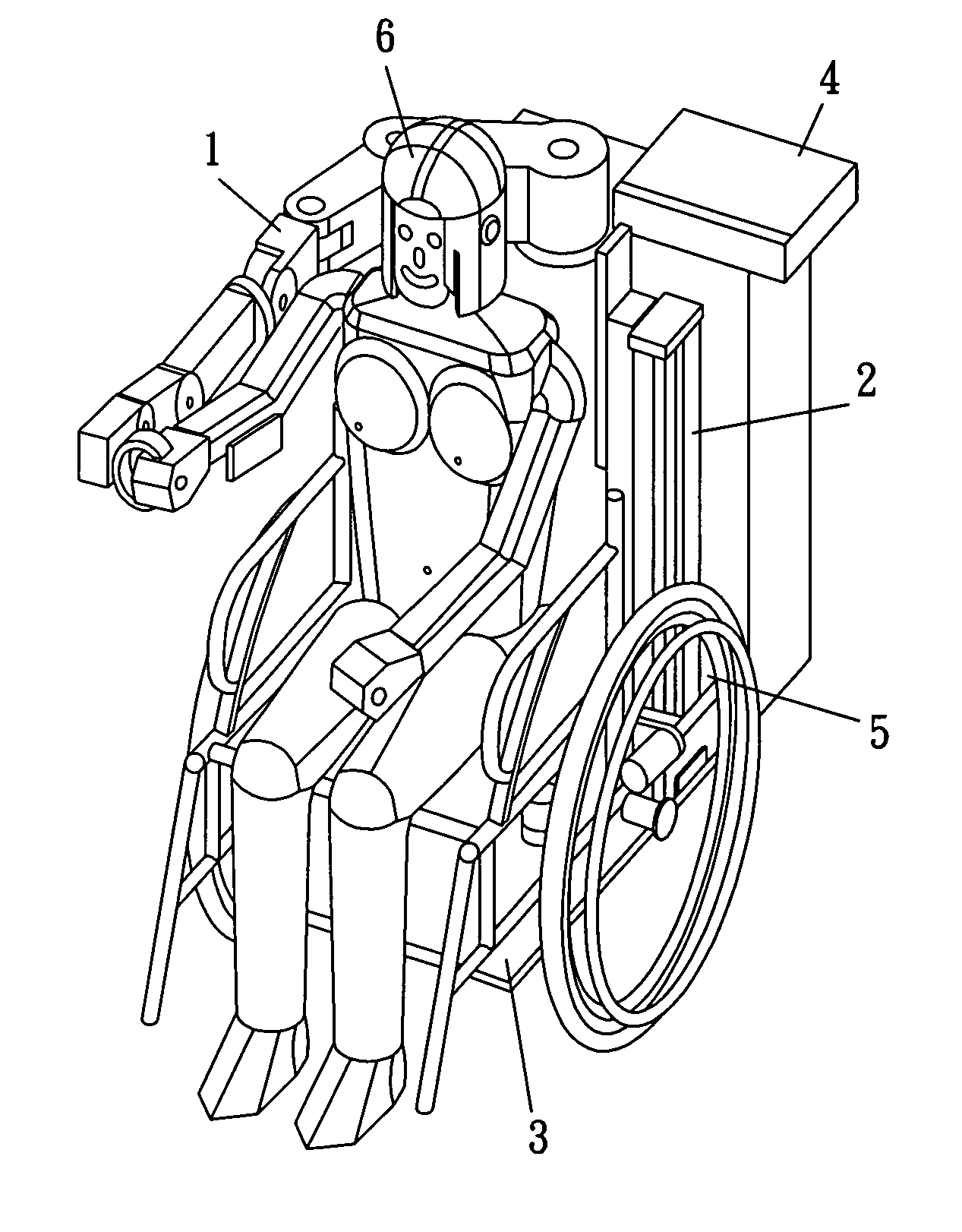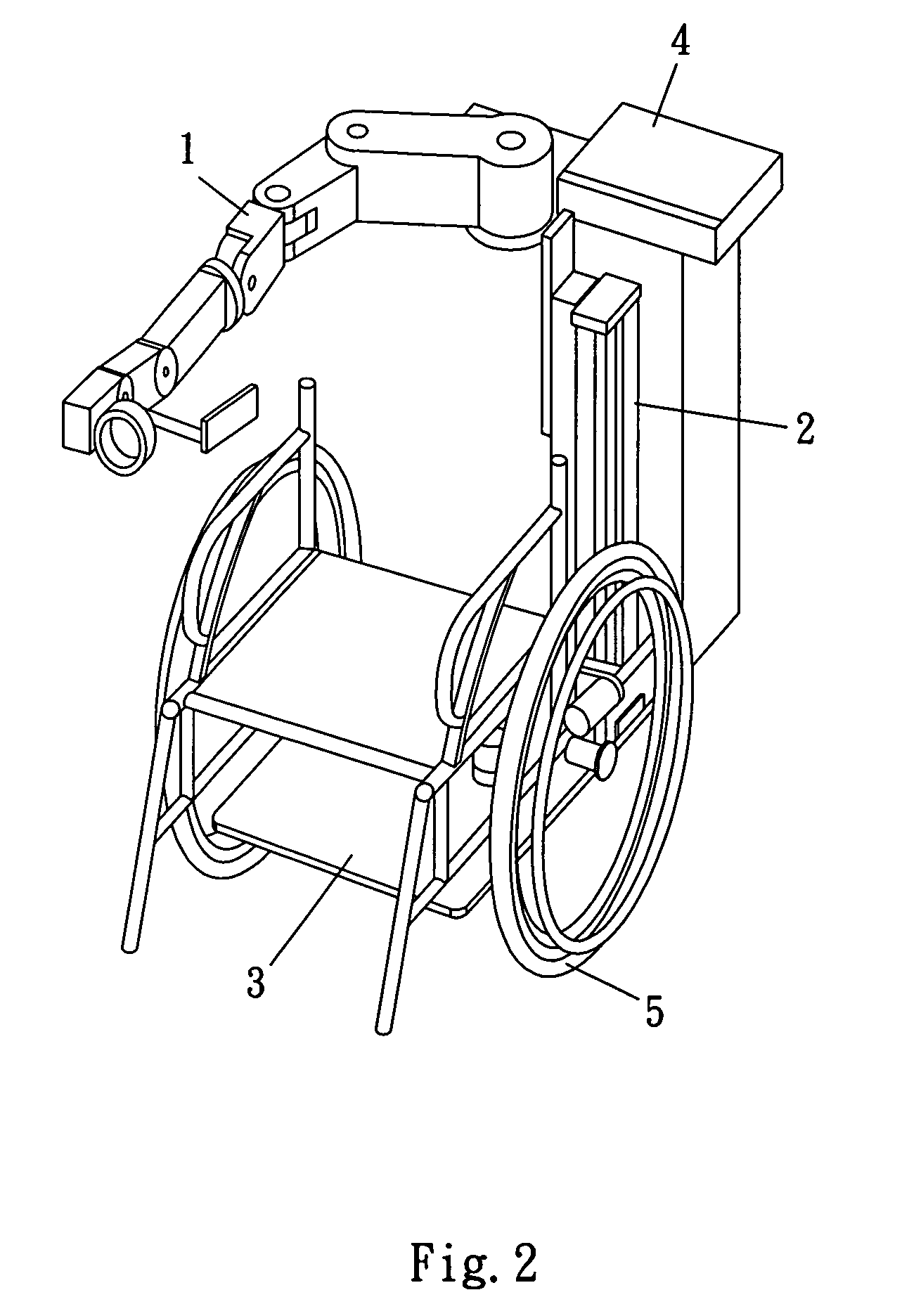Rehabilitation and training apparatus and method of controlling the same
a technology applied in the field of rehabilitation and training apparatus, can solve the problems of patient being subject to a second time injury, no means of accurately controlling the magnitude of applied force and the turning extent of the joint, and the most easily injured
- Summary
- Abstract
- Description
- Claims
- Application Information
AI Technical Summary
Benefits of technology
Problems solved by technology
Method used
Image
Examples
Embodiment Construction
[0016]Please refer to FIGS. 1 and 2 that are two perspective views of a rehabilitation and training apparatus according to the present invention with and without a patient 6 sit thereon. As shown, the rehabilitation and training apparatus of the present invention includes a multi-axis robotic arm 1, a position adjustment mechanism 2, a movable base 3, and a control system 4. In a more preferred embodiment of the present invention, the rehabilitation and training apparatus may further include a wheelchair 5. FIG. 3 is a perspective view more clearly show how the multi-axis robotic arm 1, the position adjustment mechanism 2, and the movable base 3 are connected to one another.
[0017]The multi-axis robotic arm 1 provides eight degrees of freedom, and includes total eight arm segments, namely, a first arm segment 11, a second arm segment 12, a third arm segment 13, a fourth arm segment 14, a fifth arm segment 15, a sixth arm segment 16, a seventh arm segment 17, and an eighth arm segment...
PUM
 Login to View More
Login to View More Abstract
Description
Claims
Application Information
 Login to View More
Login to View More - R&D
- Intellectual Property
- Life Sciences
- Materials
- Tech Scout
- Unparalleled Data Quality
- Higher Quality Content
- 60% Fewer Hallucinations
Browse by: Latest US Patents, China's latest patents, Technical Efficacy Thesaurus, Application Domain, Technology Topic, Popular Technical Reports.
© 2025 PatSnap. All rights reserved.Legal|Privacy policy|Modern Slavery Act Transparency Statement|Sitemap|About US| Contact US: help@patsnap.com



